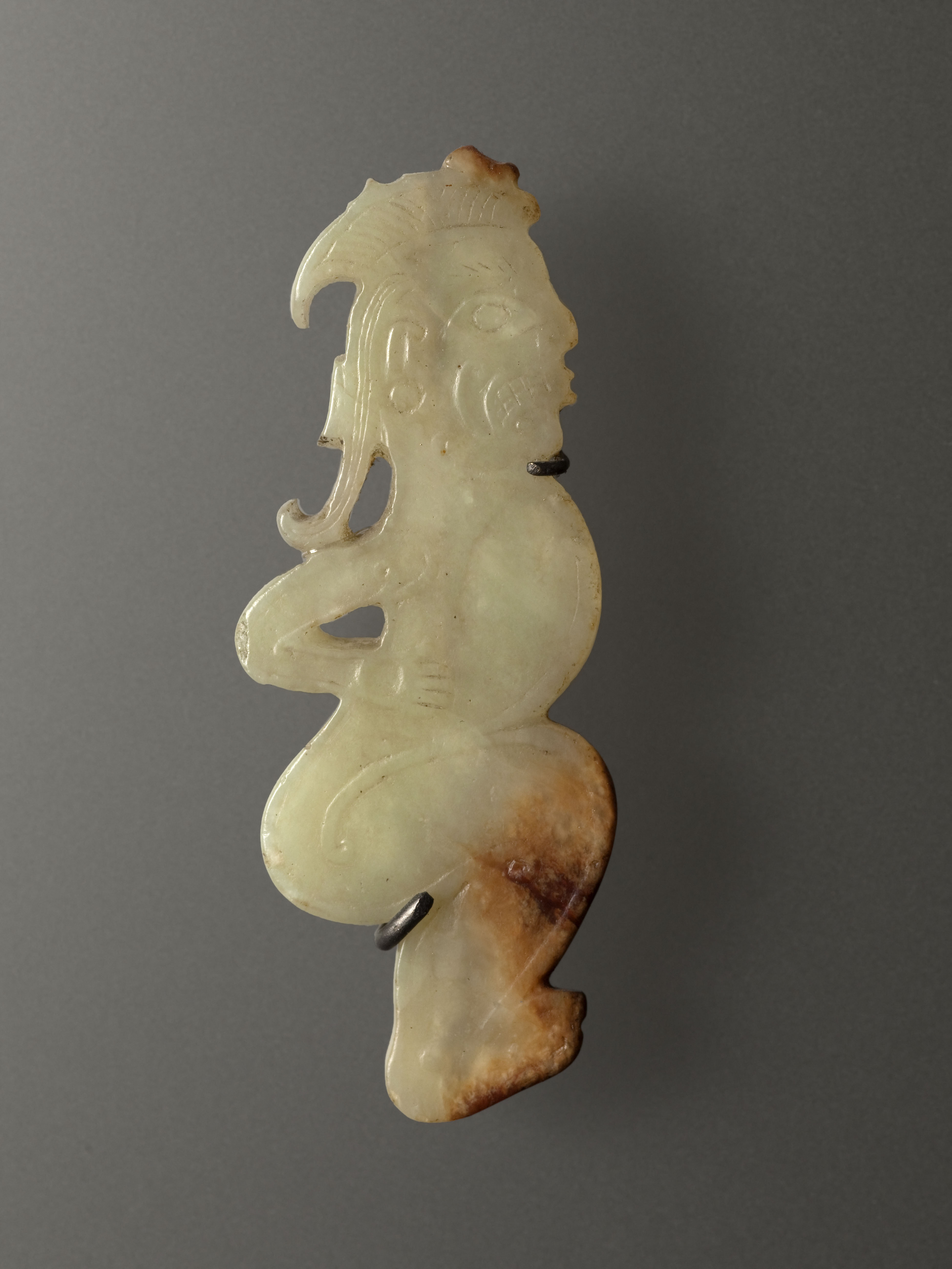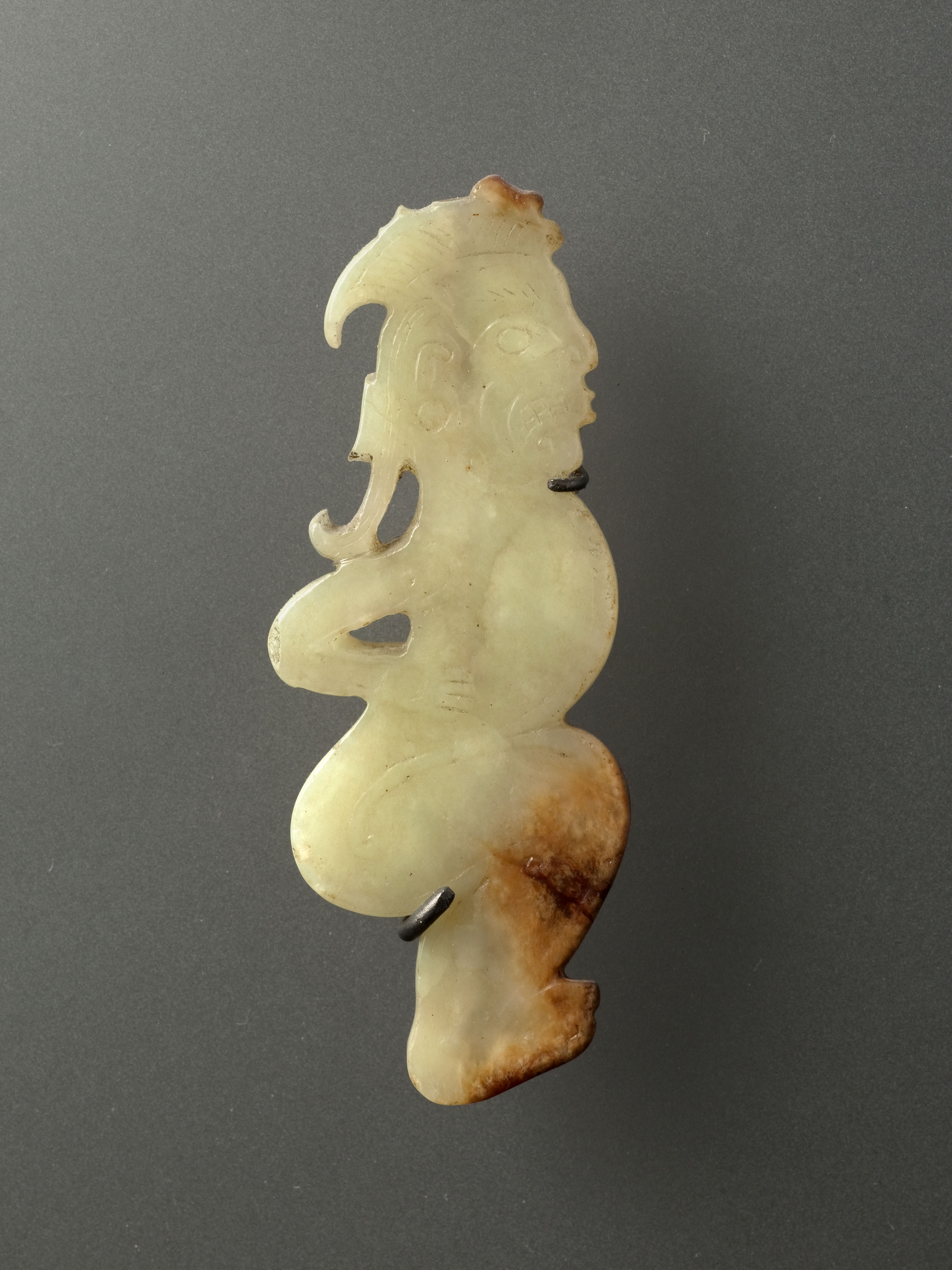
Personnage
Jade (néphrite)
Objet symbolique
Don manuel : Daridan, Jean
M.C. 8409
Small grimacing masks in jade, sometimes with an elaborate headdress, begin to appear during the Longshan culture (circa 2000-circa 1500 BC). A relatively few number of standing or crouching figures, sculpted in the round or, more rarely, into a small plaquette, as here, have been found from the Shang period (circa 1500-circa 1050 BC).
In the Cernuschi Museum piece, the figure is outlined with two parallel incised lines. This particularity is found in jades discovered 1976 at Yinxu on the Anyang site (Henan), in the royal Tomb No. 5, that of Fou Hao, wife of King Wuding, dating from the late 13th century. Two other tombs in Anyang from the Shang period have produced two pieces similar to this jade, one from Houjiazhuang, a small figure, and one from Xiaotun, a head in profile with a plume.
The iconography of these more or less grimacing figures remains an enigma; the tradition of small figures in jade sculpted in the round endured under the Western Zhou.
Doris J. Dohrenwend has suggested that the Cernuschi Museum plaquette is a work characteristic of the Warring States period (481-221 BC), comparing it to the tip of a halberd in the Freer Gallery, Washington, which is decorated with kneeling figures.

